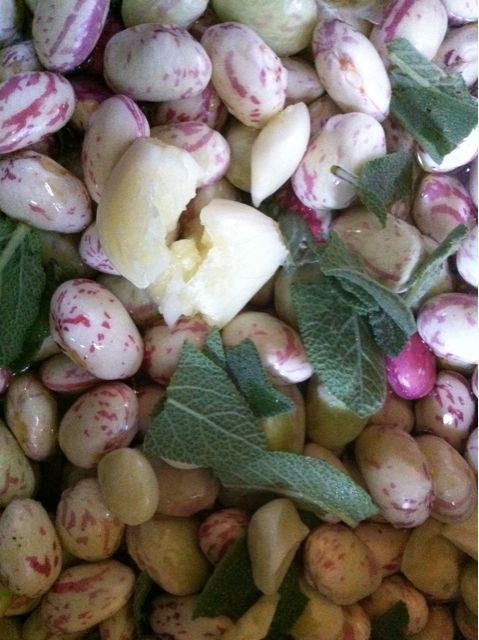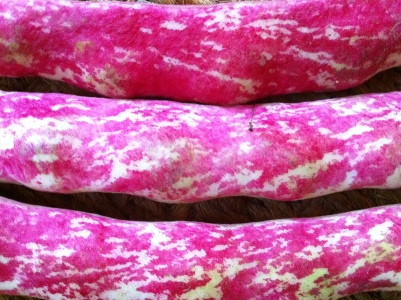You have to admit that fresh borlotti beans are very pretty. They are also quite hard to find. Maybe that will change. It seems rather quaint now to read Elizabeth David’s advice in her book on Italian Food on how to obtain that rare and exotic vegetable, the courgette.
I hope borlotti beans don’t go quite the same way: for now, fresh ones are still unusual enough in England that it’s a special occasion when I can buy some from the farmers’ market, or find a few in a veggie box from Valvona & Crolla. Finding courgettes doesn’t have the same effect. I was quite pleased the first time I bought some courgette flowers locally, but making a meal with them reminded me of the orchid scene in Barbarella.
 Beans are rather more substantial, and last week I was lucky enough to spot some at the farmers’ market. I suppose that if they start to appear more regularly, I’ll have to find a few different ways to cook them, but while I can only get them once or twice a year, I’ll stick with Marcella Hazan’s recipe for Assunta’s beans (from her book, Marcella Cucina).
Beans are rather more substantial, and last week I was lucky enough to spot some at the farmers’ market. I suppose that if they start to appear more regularly, I’ll have to find a few different ways to cook them, but while I can only get them once or twice a year, I’ll stick with Marcella Hazan’s recipe for Assunta’s beans (from her book, Marcella Cucina).
It’s a very simple recipe: shell the beans, put them in a pan with a few cloves of garlic, a handful of sage leaves, salt, pepper, a good glug of olive oil and a bit of water. Cover the pan and simmer for one and a half to two hours.
You can eat the beans just as they are, or put them on toast. You could add tuna (Marcella approves!) to make a sort of warm version of tonno e fagioli, but I prefer them without, because you lose the clarity of flavour by mixing the beans with fish. It works best as a lightish lunch or a fairly substantial starter in the context of an English-style meal.
Unfortunately, the cooked beans are not especially pretty, because the pink and white turns to light brown, but they taste wonderful, and aren’t likely to be around for long anyway.



Leave a comment
Comments feed for this article